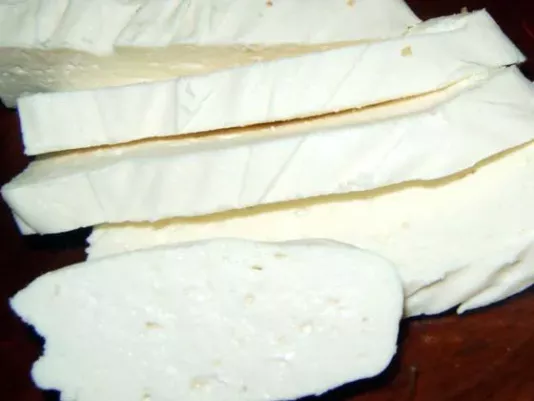Bryndza Cheese Potato Cutlets
Bryndza cheese potato cutlets - a recipe for Turkish cuisine, tender, almost airy cutlets.

Brynza is a cheese with a bold salty character, made from sheep’s, goat’s, or cow’s milk. I value it for its firm yet delicate texture, which works perfectly in both cold and hot dishes. Over years of cooking, I’ve realized that this product brings individuality and balance to food, especially where natural expressiveness is lacking. Brynza not only enriches flavor but also changes the consistency of a dish, adding density or delicate contrast depending on its use. It is suitable for salads, pies, hot appetizers, and even some sauces. For me, it is important that this cheese doesn’t require complicated preparation, though it does demand precision in dosage: too much easily overshadows other ingredients. I always emphasize that brynza is an example of an ingredient that teaches respect for balance and harmony of flavor.
Over years of cooking, I have learned to distinguish good brynza from mediocre even before tasting. I always pay attention to color: quality cheese should be white or slightly creamy, without yellowing or spots. The texture should be firm yet tender, without excessive crumbliness or slipperiness. I check the smell – it should be milky, clean, with a light tang, but without sharp or rotten notes. The level of saltiness is also crucial: overly salty brynza makes dishes heavy and harsh, while lightly salted cheese is more versatile. In my practice, I always choose cheese with a natural composition, free of unnecessary additives, since ingredient purity ensures a refined taste. Another important detail I consider is origin: brynza made from sheep’s milk has a more intense aroma, while cow’s milk cheese is softer and more neutral. Knowing this, I can always choose the right option depending on the dish I’m preparing.
In my practice, preparing brynza always defines its role in the dish. If the cheese is too salty, I soak it in cold water for several hours to soften the flavor and make it more harmonious. This is especially important when I plan to use brynza in salads, where the balance between vegetables and cheese must be subtle. For baking, I cut brynza into cubes or grate it on a coarse grater – this allows for even distribution in the dough. In hot dishes, I often use medium-sized pieces, as they keep their shape but melt pleasantly inside. I also pay attention to the product’s temperature: I always take brynza out of the fridge in advance so it’s not too cold and blends better with other ingredients. Over years of cooking, I’ve realized that proper preparation makes cheese not just an addition but a full-fledged component of a dish, influencing both texture and flavor.
Through experience, I’ve learned that brynza requires a delicate approach to temperature. If overheated, it loses its structure and turns into a dry mass, stripped of its pleasant tenderness. In my practice, I always add brynza to hot dishes at the final stage, when the temperature allows it to soften slightly but not fall apart completely. In baking, it’s important to maintain balance: too high a temperature dries the cheese, while too low prevents it from unfolding. That’s why I always keep to a medium setting and make sure the pastry bakes evenly. When working with casseroles or hot appetizers, I distribute brynza so that it becomes part of the overall structure, not a separate layer that can burn. It’s important to remember that this cheese keeps its pleasant texture only when used with an understanding of heat processes. That’s how I ensure that brynza retains its best qualities even after cooking.
Over years of cooking, I’ve discovered that brynza is one of the most versatile cheeses, easily combining with many foods. It pairs wonderfully with fresh vegetables – tomatoes, cucumbers, peppers – creating vibrant summer salads. In my practice, I often add brynza to dishes with herbs, especially dill, parsley, or mint, since their aroma highlights the cheese’s saltiness. In baking, it pairs beautifully with puff pastry or shortcrust bases, creating a contrast of textures. I also love using brynza in hot dishes with potatoes or mushrooms, as these ingredients create a harmonious ensemble of flavors. In my experience, I’ve noticed that brynza can even replace salt in some recipes, as its saltiness is self-sufficient. It’s important to remember that this cheese doesn’t need overly complex companions – it creates a bold flavor profile on its own. The real culinary skill lies in pairing it with simple foods.
In my practice, I’ve seen inexperienced cooks make mistakes with brynza, and it always affected the result. The most common mistake is using overly salty cheese without soaking it first: the dish becomes aggressively flavored. Another is incorrect dosage, when brynza completely overshadows other ingredients instead of enhancing them. I always stress that this cheese should be introduced gradually, tasting at every stage. Another risk is storage: if brynza is left open in the fridge, it quickly dries out and loses its tenderness. I always keep it in brine or a sealed container to maintain quality. It’s also important to check the expiration date: stale brynza develops bitterness and an unpleasant smell that can ruin the entire dish. Over years of cooking, I’ve learned to value this product and treat it with respect, since only quality control and attentiveness guarantee that brynza becomes the highlight of any recipe.